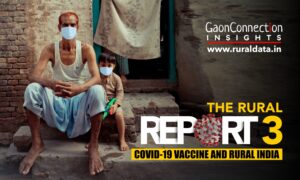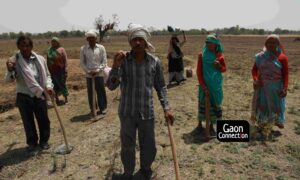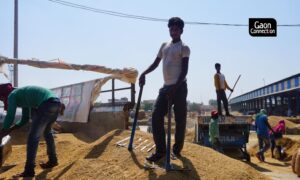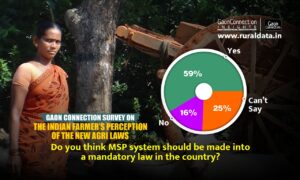In a first survey of its kind on the ‘COVID-19 vaccine and Rural India’ by Gaon Connection, India’s biggest rural media platform, more than half (58.4 per cent) of rural respondents said awareness programmes were held in their villages to sensitise the villagers about coronavirus and how to protect themselves from COVID-19. A little over 30 per cent said no such drives were organised in their villages whereas 11.5 per cent said they were not aware of it.
Upon analysing the data zone-wise, about two-third respondents in the east-northeast, west and south zones reported that sensitisation or awareness programmes were held in their village. This was the highest in the west zone where almost 70 per cent respondents said such programmes were held at the village-level followed by the south zone at 62 per cent and the east-northeast zone at 61.9 per cent. The lowest was in the north zone at 48 per cent.
These are among the key findings of the first of its kind survey on the perceptions of rural Indians around the coronavirus vaccine by Gaon Connection Insights, the data and insights arm of India’s biggest rural media platform Gaon Connection. The survey, released as ‘The Rural Report 3: COVID-19 Vaccine and Rural India’ and available in full for a free download on www.ruraldata.in.
The face-to-face survey, conducted between December 1 and December 10, was carried out by Gaon Connection surveyors among 6,040 rural respondents across 60 districts in 16 states and one union territory. The selection of states, covering all regions of the country, was based on the prevalence of COVID-19 as per the COVID data of the Union ministry of health and family welfare, Government of India.
The survey had a margin of error of 5 per cent and a 95 per cent confidence level.
In the Gaon Connection survey, states covered under the north zone include Uttar Pradesh, Bihar, Jharkhand, Himachal Pradesh, Punjab, Jammu and Kashmir, Haryana. States in the south zone include Kerala, Andhra Pradesh, Karnataka. The west zone includes Maharashtra, Gujarat, Madhya Pradesh; whereas the east-northeast zone includes Odisha, Assam, West Bengal, Arunachal Pradesh.
“As soon as we became aware of COVID-19, we began raising awareness among the villagers,” Bhakti Sharma, the sarpanch of Barkhedi Abdullah gram panchayat, 20 kms away from Bhopal district headquarters in Madhya Pradesh, told Gaon Connection. “We informed people about the need to maintain hygiene and cleanliness, made them aware of the importance of washing their hands frequently, ensuring they wear their masks and maintained social distancing and going out only if it was absolutely necessary,” she added.
According to her, when the migrant labourers began returning home, all the gram panchayats of Madhya Pradesh were given funds from the government to enforce cleanliness in the villages, make food and living arrangements for the returning labourers within each panchayat, and distribute masks. “This, to a great extent, prevented community spread of the coronavirus,” she said.
The Gaon Connection survey covered people across caste, religion, gender, income group, community and regions. The states that were surveyed were selected based on the COVID-19 data provided by the Union Ministry of Health and Family Welfare, Government of India.
According to Chandrashekhar Pran, founder of Teesri Sarkar working on gram panchayats across the country, it was not just the government that conducted awareness drives. “The general public too made efforts on its own to prevent the spread of COVID-19. To this end, NGOs, women’s organisations and youth clubs all came forward to sensitive the rural population,” he said.
“You will find state-wise variations in the awareness campaign on COVID-19,” Pran who is from the Pratapgarh district of UP, explained. “In north India, these figures will be low, while in the eastern and southern states, their percentages are higher,” he added.
This is reflected in the Gaon Connection survey too.
“In Punjab, the government did not take it seriously to hold awareness drives in the state’s villages,” Paramjit Kaur Mann, general secretary of the ASHA Worker Facilitator Union in Punjab, told Gaon Connection. “However, people were pretty aware of the pandemic through television and newspapers,” she added.
There are 18,000 ASHA workers who are members of the Union in Punjab. “Not just the villagers, even the ASHA workers were not provided any sanitisers or masks by the government,” she said. According to Mann, many NGOs and self help groups came forward to raise awareness amongst the people along with the ASHA workers and while they all took precautions, the government did not make any significant contribution.
It was word of mouth that helped the most, said Pran. “ASHA sisters went door-to-door telling villagers about the protocol of repeatedly washing hands with soap, washing vegetables with warm water and to eat out as little as possible,” he said. In fact, it is due to COVID-19 that there is so much cleanliness and awareness in gram panchayats for the first time, he added. According to him, special budgets helped organise awareness drives in many states, while in some states there was no such help.
As part of the Gaon Connection survey, respondents were also asked what protective measures they adopted to stay safe in the pandemic. Of the total respondents, 67.2 per cent said that they wore masks when they went out, while 41.8 per cent said that they washed or sanitised with soap and water frequently.



















